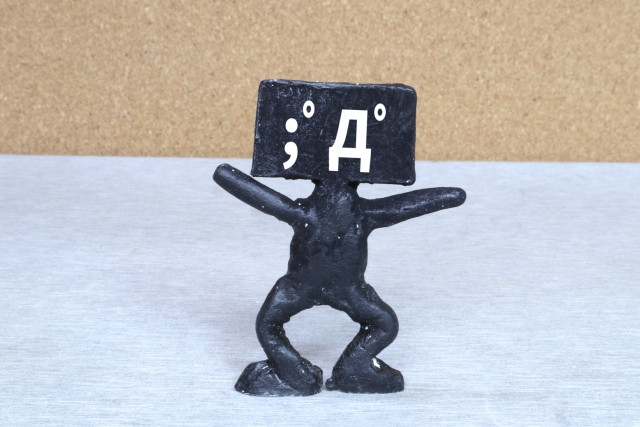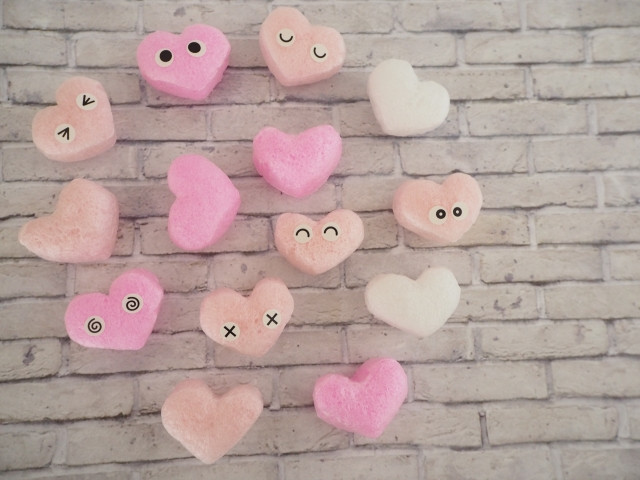Emoticons are typically used by people, not just in Japan but around the world, to express themselves creatively and to add clarifying features to the conversation. With hundreds of different emoticons to choose from, these cute little Japanese icons definitely give life to an otherwise ordinary conversation.
Table of Contents
- Emoticons in Japan
- Commonly Used Japanese Kaomojis and Their Meanings
- Where to Find Japanese Kaomoji and Other Useful Information
- Summary
Emoticons in Japan

History of Japanese Emoticons or Kaomojis
Have you ever been confused by the tone of a message? Scott Fahlman was the one who initiated the idea of using emoticons to ease communication and message tone confusion in 1982. The first emoticon was a colon, dash and parenthesis - you know the one - to display a smile. :-)
Eventually, Japan adopted the use of emoticons but turned them right side up, thanks to Yasushi Wakabayashi. The very first one was the Japanese equivalent of :-) which was expressed by (^_^)
These emoticons were named ‘’kaomoji’’, meaning face characters, and at present, roughly 10,000 of them are said to exist. What is known as emoji, however, are the emoticons we know and use in English and other languages (more on this below.)
※ Bloomberg, "The Man Who Brought a :-) to Your Screen" ※ Emoticons, Kaomoji, and Emoji: The Transformation of Communication in the Digital Age, "A Technical History"
Uses of Kaomoji
Kaomoji are not only widely used for texting, but also to add extra expression to blogs, forums and so on. Actually, with the rise of color emojis on smartphones and Line stamps (more on those later), these simple kaomoji are found less and less in texting and more in other places. Even with the rise of social media, you might find Japanese people using these kaomoji in game chats, tweets, Instagram posts, YouTube comments, etc. as the abundance of kaomoji can help people express themselves in a fun and more accurate way compared to the limited number of standard emojis that come with a cellphone keyboard.
Note: Sometimes the symbols used in kaomoji are more complex and don’t always accurately show up via text. Don’t be surprised if a key element in your complex kaomoji shows up as blank or a blank box.
Writer's Pick
Commonly Used Japanese Kaomojis and Their Meanings
If you have a Japanese language keyboard, whether on your computer or smartphone, switch to it now and type in the words かおもじ. Immediately, it should provide you with the usual dropdown list of kanji and other suggestions for how to write the words. But かおもじ is special in that it will also give you an entire list of already formatted kaomoji for you to choose from. Let’s go through some of them that you can find in the list.
Happy Kaomoji
Usually you can tell that the kaomoji is a happy one either by the ^^ eyes or the big open mouths, whether by triangle, upside-down A, a lower case squiggly w, or other forms:
(^^) (*^▽^*) (*‘∀‘) (*‘ω‘ *)
To show even more excitement, the eyes might be shown as squeezed shut using angle brackets >< or show more movement with arms attached to the kaomoji, or even more asterisks and symbols next to the face:
(>∀<) (≧▽≦) ヽ(^o^)丿 (^o^)/
From Simeji: ٩(ˊᗜˋ*)و (((o(*゚▽゚*)o))) (❁´ω`❁)
Sad Kaomoji
Sad kaomoji is usually characterized by tears either using ; , + or T, or angle brackets, or eyes close to the bottom:
( ;∀;) (+_+) (T_T)/~~~ (._.)
From Simeji: (><) ˚‧º·(˚ ˃̣̣̥⌓˂̣̣̥ )‧º·˚ (*꒦ິ⌓꒦ີ)
Other Common Emotions for Kaomoji
Shy (hands covering face): (*ノωノ) (/ω\)
Shocked (wide mouth, exclamation marks): (゚Д゚;) \(◎o◎)/
!Σ(・ω・ノ)ノ!
Angry/Annoyed (flat line mouth, へ mark for mouth, apostrophes for eyes): (-_-) <`ヘ´>
Kaomoji with Words
Sometimes kaomoji are used for greetings, as well as have words attached to them to make it absolutely clear what the situation is. Some common ones:
Good morning: (^_^)/おはよー (“ohayo”; change the word to change the greeting)
Taking notes: ( ..)φメモメモ (says “memo memo”)
Sleeping: (-_-)zzz
Animal Kaomoji
Of course cute kaomoji is popular, which includes animals! (From
Simeji):
Bear: (·(ェ)·) (´(ェ)`)
Cat: ฅ^•ﻌ•^ฅ (=`ェ´=) (●ↀωↀ●)✧ ₍˄·͈༝·͈˄₎ฅ˒˒
Bird: ( ˘⊖˘) ˎ₍•ʚ•₎ˏ
Dog: (▽◕ ᴥ ◕▽)
Other Popular Kaomoji
Roger (salute) / I understand: ('◇')ゞ
Bowing: m(_ _)m
Covering mouth to laugh: ( *´艸`)
Flipping the table in anger: トリャー(┛ಠДಠ)┛彡┻━┻
Where to Find Japanese Kaomoji and Other Useful Information

Where to get Kaomoji
Again, if you have the Japanese keyboard/language option on your computer or device, then you can type in kaomoji かおもじ in Japanese and choose from a preselected assortment of kaomoji.
Read more about the Japanese keyboard in our article here.
Or you could install a Japanese keyboard app such as Simeji, Flick and other apps to not only have kaomoji at your fingertips, but a lot of other features as well.
And if you only need it occasionally, you can always google 顔文字 and find them online.
Emoji
Nowadays, most people have emoticons, known as 絵文字 emoji - literally meaning “picture words” - on their phones and devices which are used universally around the world. However, some of them are used to mean different things in Japan so you should look out for these:
🙄 - what we know to be “rolling eyes” emoji in English also means “thinking about it” in Japan
💦 - what is often used in “thirst” posts in English, sweat or “ase” in Japan is often used to denote being nervous about something
💢 - this symbol means that you’re angry. You often see it on the faces of people in manga and anime when they are mad.
Other Internet Slang
In addition to kaomoji and emoticons, you might find these examples of common Internet slang or speak:
w or www - read as “kusa”, it’s the equivalent of lol. The more w or “kusa”, the funnier they find the situation. It’s called kusa which means grass because it looks like grass growing on a lawn
8888 - read “pachi pachi pachi pachi”, it’s onomatopoeia for clapping noises or applause
垢 - read “aka”, it’s short for account in reference to social media accounts
orz - this is supposed to be a person bowing with their head to the ground in defeat. This is no longer used as much thanks to the emergence of the various emoji but you might see it sometimes.
Summary

Kaomoji, the original Japanese text emoticons, is still fun to use although you might see it less due to the ever-expanding range of colorful emojis. Try using them out (not at work!) to brighten up your social media posts and conversations with friends!
































